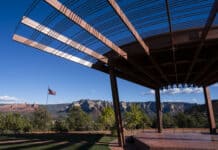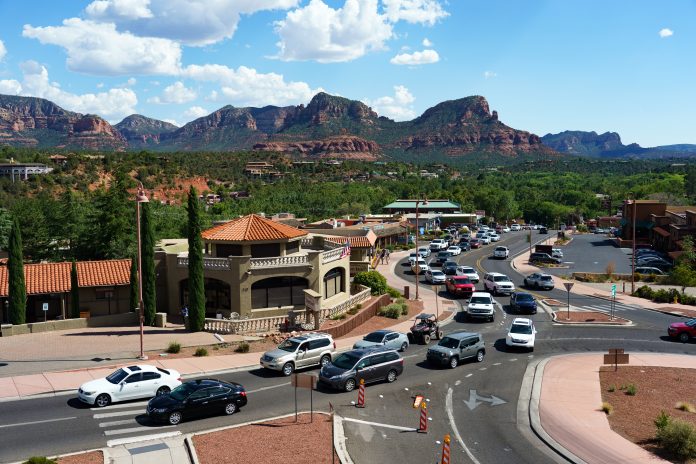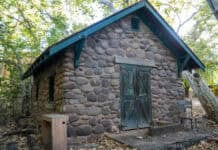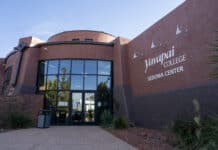The Sedona City Council took a major step forward in its desire to implement a transit system in the area to help reduce traffic.
The council, on Tuesday, Aug. 11, gave direction to accept a grant that will help cover the costs to hire a city transit administrator, who will be expected to lead the city through the process of establishing a transit plan.
According to a presentation by Sedona Assistant City Manage r and Community Development Director Karen Osburn, due to a pending Federal Transit Administration grant award, the city needed to make a decision regarding next steps for public transit.
As part of a grant program, the city has received notice that it is being awarded a total of $132,800 over the next two federal fiscal years toward the hiring of a transit administrator position and supplementary consulting services for transit implementation work.
Each year’s award will include $46,400 toward the administrator position and $20,000 toward consultant services. The city is required to provide a 20% grant match. A full year cost for a transit administrator, with salary and benefits, is estimated between $130,000 to $140,000.
The Arizona Department of Transportation is the administrator of the federal grant funds on behalf of the FTA. By October the city needed to decide whether or not it wanted to accept the award. Accepting the award commits the city to hiring a transit administrator and moving forward with implementation of new transit services.
“We’re hopeful that if we’re good stewards of the funds they are providing and we make progress toward implementation [of a transit plan], that they will continue to provide funding support for future administration and future operations,” Osburn said.
She said funds through ADOT are very competitive but feels the state has seen the city’s commitment to move forward with a transit plan. If the city declined these funds for a transit administrator, Osburn said she’s unsure if funding would be available in two years when the city would again be eligible.
Often, those providing funding don’t look favorably on applicants who apply but then don’t move forward with the work they said they’d like to do, she said. But now that they have accepted the grant, it’s a case of looking at the bigger picture.
“The $66,000 isn’t a huge amount in the grand scheme of things,” she said. “It’s really not about the dollar amount right now. It’s about us being able to continue to work with ADOT and if we’re good grant recipients. We’re getting our foot in the door with ADOT decision makers and positioning ourselves for future funding.”
The financial plan synopsis assumed the pursuit of federal transit grant funding for both operating and capital, as well as contributions from both Yavapai and Coconino counties toward a portion of the services planned to the unincorporated county areas, Osburn wrote in her report. Sedona’s contribution to the system was the lion’s share, estimated between $4 million to $5 million annually.
In March, council gave direction to staff to conduct an additional public survey to assess community willingness to fund a future system, specifically interest in extending the half-cent transportation sales tax [for Sedona in Motion projects] beyond the initial 10-year approval in 2028 and dedicating it to funding transit. That survey would have been issued mid-March but has been delayed due to the COVID-19 pandemic.
City Attorney Robert Pickels advised council to not give direction on extending the half-cent sales tax at this time. Instead, he said, it should be done at a future meeting and noticed as such to allow public comment.
The proposed transit plan is broken into four phases. Not all four may be needed upon evaluation at that time.
■ Phase I is the costliest, at nearly $31 million, because it includes a $15 million operations and maintenance facility as well as another $15 million for electric buses for core routes.
■ Phase II would add additional trailhead stops, which would be decided upon with input from the U.S. Forest Service. This cost is estimated at $270,000.
■ Phase III would add service to destinations in Oak Creek Canyon. This includes an intercept parking lot in the Village of Oak Creek and additional vehicles for the extended route to the Village. This phase is estimated at $7 million.
■ The final phase will add express service from an intercept parking lot near VOC to Slide Rock State Park. This phase calls for a dozen additional vehicles for the Slide Rock route and a second VOC intercept parking lot, all of which carries a price tag of $13.5 million.
If all four phases were to be implemented, it could take upwards of a decade to complete.





















